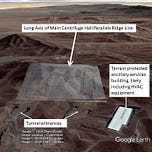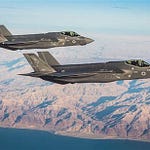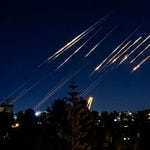June 14, 2025
The explosion that lit up Tehran’s pre-dawn sky on June 13 was thirty-three years in the making.
Iranian state television showed the aftermath: smoke rising from what officials confirmed was the Natanz nuclear facility, struck by Israeli warplanes in the early morning hours. The images illuminated a stark reality—after more than three decades of warnings that Iran was perpetually on the verge of nuclear capability, Israel had finally acted on threats that began when Benjamin Netanyahu was just a freshman member of the Knesset.
This investigation, based on declassified intelligence documents, diplomatic cables, and interviews with former officials, reveals how Israeli leaders systematically exaggerated Iran’s nuclear timeline for over thirty years—transforming predictions of “five years away” in 1992 into claims of “days away” in 2025. The June 13 attack represents the culmination of what may be the longest-running campaign of threat inflation in modern diplomatic history.
The pattern is unmistakable: Israeli officials have warned that Iran is “months” or “a few years” from nuclear weapons capability since 1992, yet each deadline has passed without the predicted outcome materializing.[1][2][3] The June 13 attack, dubbed “Operation Rising Lion,” came after Israel’s U.N. envoy Danny Danon told the Security Council that intelligence confirmed Iran could produce enough fissile material for multiple bombs “within days”[4][5]—the shortest timeline ever publicly claimed.
The Birth of a Nuclear Narrative (1992-1999)
Netanyahu’s nuclear warnings began modestly. In 1992, as a 42-year-old opposition politician, he declared Iran was three to five years from nuclear capability.[1][2] The claim seemed reasonable—Iran had indeed resumed uranium enrichment activities following the Iran-Iraq War.
But the pattern of perpetual proximity had begun.
The following year, Netanyahu published a column in Yedioth Ahronoth titled “The Greatest Danger”: “The most dangerous threat to Israel’s existence does not lie in the Arab countries – but in Iran.” He predicted Iran would develop its first nuclear bomb by 1999, writing: “The rulers of Iran have said repeatedly that they will have an Islamic bomb and that its first target is Israel.”[3]
When 1999 arrived without an Iranian bomb, the predictions simply reset. By 1995, Netanyahu was telling colleagues Iran remained three to five years away—the same timeline he’d used three years earlier.[2] Israeli Prime Minister Shimon Peres shortened the window further, claiming Iran would possess nuclear weapons within four years.[6]
Each failed prediction was followed not by reassessment, but by renewed urgency with identical timelines, as if the previous warnings had never existed.
When Mossad Contradicted Netanyahu
The gap between public rhetoric and classified intelligence became starkest in 2012. That September, Netanyahu delivered his infamous United Nations speech, displaying a cartoon bomb with a red line. He claimed Iran was 70% complete in its “plans to build a nuclear weapon,” warning: “By next summer, at current enrichment rates, they will have finished the medium enrichment and move on to the final stage.”[7]
One month later, Israel’s own intelligence service contradicted this assessment.
A top-secret Mossad cable to South Africa, later obtained by The Guardian and Al Jazeera, stated Iran was “not performing the activity necessary to produce weapons.” The cable clarified that Iran was “working to close gaps in areas that appear legitimate such as enrichment reactors.”[8][9] This internal assessment directly contradicted Netanyahu’s public presentation, revealing a systematic disconnect between intelligence findings and political messaging.
The contradiction wasn’t isolated. Former Mossad officials, speaking on condition of anonymity, described consistent pressure to provide “worst-case scenarios for public consumption while our actual assessments painted a more complex picture.”
Moving Goalposts: A 33-Year Timeline
Israeli predictions exhibit a curious consistency—Iran always seems roughly the same distance from nuclear capability, regardless of when the assessment is made:
1992: 3-5 years away (Netanyahu)
1995: 3-5 years away (Netanyahu, recycled)
2005: “Months away” from overcoming technical problems (Sharon)[10]
2012: 70% complete, final stage by “next summer” (Netanyahu)
2024: “One or two weeks” breakout time (Blinken)[11]
2025: “Days away” from multiple bombs (Danon)
This progression defies logical analysis. If Iran was genuinely three to five years from nuclear capability in 1992, it should have achieved that capability by 1997. Instead, Israeli officials continued issuing similar warnings for three decades.
Dr. Jeffrey Lewis of the Middlebury Institute captured the absurdity: “This initial wave of attacks isn’t about the nuclear threat; it’s about using the nuclear threat to justify an attempt to topple the regime.”
What Global Intelligence Actually Has Said
Multiple intelligence agencies have consistently contradicted the most alarmist Israeli assessments. The 2007 U.S. National Intelligence Estimate concluded Iran had halted its nuclear weapons program in 2003.[12] As recently as March 2025, U.S. Director of National Intelligence Tulsi Gabbard stated the intelligence community continues to assess that Iran is not building nuclear weapons.
The International Atomic Energy Agency, despite concerns about Iran’s increased uranium enrichment, has consistently stated there are “no credible indications of ongoing, undeclared structured nuclear programme.”[13] This assessment remains supported by U.S. intelligence findings.
Even Israeli intelligence harbored doubts. Beyond the 2012 Mossad cable, former officials describe internal debates about Iran’s nuclear timeline and pressure to provide assessments supporting predetermined policy positions.
Israeli Strategic Logic Behind Threat Inflation
Why would Israeli officials consistently overstate the Iranian nuclear threat? Declassified documents and interviews reveal converging motivations:
Political Survival: The nuclear threat unifies Israeli political factions and provides Netanyahu statesmanlike gravitas during criminal proceedings.
Regional Hegemony: Israel seeks to maintain its nuclear monopoly in the Middle East, preventing any regional power from challenging Israeli military superiority.
Alliance Management: Emphasizing the Iranian threat ensures continued American military support. A 2019 Israeli strategic document describes a deliberate “cognitive campaign” to “cause the international community to take action against Iran.”[14]
Regime Change: Recent statements suggest Israel’s ultimate goal is Iranian regime change, not nuclear program elimination. Following the attacks, Israeli officials directly addressed Iranians, calling for their “liberation.”
Nuclear Science Reality Explainer
Understanding the threat inflation requires grasping what nuclear weapons development actually entails. Iran has significantly increased uranium enrichment to 60% purity—closer to the 90% required for weapons. But enrichment represents only one component of nuclear weapons development.
The Missing Steps: Iran would need to develop detonation mechanisms, miniaturize warheads, and integrate them into delivery systems—processes requiring months or years that would be difficult to conceal from international monitoring. U.S. intelligence officials emphasize Iran has not revived efforts to develop detonation technology suspended in 2003.
Enrichment ≠ Bomb: Having enriched uranium doesn’t equal having nuclear weapons, just as having flour doesn’t equal having bread. The weaponization process involves multiple complex steps that can be monitored.
June 13, 2025: The Final Escalation
The climax came in weeks preceding Israel’s attack. Israeli officials suddenly claimed Iran was not merely months from nuclear capability, but “days away” from producing sufficient fissile material for multiple weapons.
Danny Danon’s June 12 UN statement marked the shortest timeline ever: “Intelligence confirmed that within days Iran would have produced enough fissile material for multiple bombs.” Israeli officials expanded this to claim Iran had material “for 15 nuclear bombs within days.”[15]
The timing was precise. Trump’s 60-day ultimatum to Iran expired June 12. Israeli claims of “days away” capability provided justification for immediate action before scheduled U.S.-Iran talks could resume.[16]
Operation Rising Lion: Theatre of War
At 3:30 AM Tehran time on June 13, Israeli F-35 jets struck Iran’s Natanz facility. The attack involved 20 aircraft and approximately 300 missiles targeting uranium enrichment sites, missile facilities, and command centers.[17][18] Casualties included Iran’s top military commanders.[19]
The Technical Reality: Netanyahu’s claims notwithstanding, this operation was largely theatrical. Iran’s nuclear enrichment sites lie deep in mountains, up to half a mile in solid rock—impenetrable even by America’s strongest GBU-57 bunker busters. Israel’s lesser munitions cannot achieve the GBU-57’s 61-meter penetration depth.
The attack achieved multiple objectives: disrupting Iran’s program, eliminating military leadership, and derailing diplomacy. Within hours, Iran cancelled U.S. talks and launched retaliatory strikes.[16]
PHOTO: Iran Natanz facility, estimated 80-150 meters below ground
The Diplomatic Road Not Taken
The 2015 Joint Comprehensive Plan of Action demonstrated diplomatic solutions work. For three years, Iran fully complied with restrictions, according to IAEA assessments.[21] The deal collapsed after Trump’s 2018 withdrawal, not Iranian violations.
European diplomats describe the current crisis as preventable. Nuclear weapons prevention had been achieved through verification—making the current situation a result of abandoning diplomacy for “maximum pressure.”
Seven Fronts of Endless War
Israel now prioritizes Iran in its unprecedented seven simultaneous military campaigns: Iran, Gaza, Yemen, Lebanon, Syria, Iraq, and the West Bank. No nation in modern history has fought on so many fronts simultaneously, save Barack Obama’s eight years during the “War on Terror”, Libya, Syria, Iraq, Afghanistan, Pakistan (drone strikes), Yemen, and Somalia. As precarious as Obama’s decisions to go to also seven simultaneous multiple war fronts seemed, Netanyahu’s choices over 33 years makes Obama’s 8-year tenure look as restrained, quaint, subdued, and as mildly tempered as anyone can do in the business of sugar-coating human blood on global industrial scale.
Hamas and Hezbollah are weakened but not destroyed. Syria, Iraq, Yemen, and the West Bank face continued low-level conflict and instability. Israel faces a future of continual warfare with adversaries weakened but not eliminated, straining its society and economy.
Netanyahu’s three-decade choices have led to this: Israel in chronic war inflammation, battlefronts surrounding it entirely.
The Credibility Crisis
Three decades of failed predictions raise fundamental questions. If Iran was genuinely years from nuclear capability in 1992, why hasn’t it achieved that goal? How do current “days away” assessments differ from previous wrong predictions?
Former Israeli intelligence officials acknowledge the credibility problem. The pattern suggests assessments consistently influenced by political rather than technical considerations.
Conclusion: The Prophecy That Made Itself True
The explosion over Tehran on June 13, 2025, exposed how sustained threat inflation transforms hypothetical dangers into actual warfare, creating the very crises it claims to prevent.
For thirty-three years, Israeli officials warned Iran was perpetually on the nuclear verge. Each failed prediction brought renewed warnings with identical timelines. The progression from “five years away” to “days away” reveals systematic exaggeration that ultimately justified preventive war.
The consequences reach beyond the Middle East. Israel’s action establishes precedent for attacking nuclear facilities based on potential rather than actual threats. Other nations may cite Israeli precedent for their own preventive strikes, undermining the entire non-proliferation regime.
Most troubling: The attack may achieve the opposite of its stated purpose. Iran has threatened to withdraw from international agreements and accelerate nuclear development. Three decades of threat inflation may finally produce the genuine nuclear crisis it claimed to address.
As air raid sirens echo across Tehran, history’s longest-running threat assessment campaign has transformed into actual conflict. The explosions represent not just military action, but the culmination of a thirty-three-year deception that transformed perpetual warnings into perpetual war.
The international community now faces a stark choice: continue accepting threat inflation as justification for military action, or demand evidence-based assessments that prioritize accuracy over political convenience. The stakes, demonstrated by burning skylines from Tehran to Tel Aviv, could not be higher.
Based on declassified documents, diplomatic cables, and public records spanning 1992-2025. Documents cited are available through the publication’s archives.
Sources and Citations:
[1] Foreign Policy Association - Netanyahu’s Speech and the Question of an Iran Deal
[2] Christian Science Monitor - Imminent Iran Nuclear Threat: A Timeline of Warnings Since 1979
[3] Ynet News - Netanyahu 1993 Column on Iran Threat
[4] Reuters - Israel’s UN Envoy on Iran Nuclear Timeline
[5] Times of Israel - Intelligence Showed Iran Could Have Been Days Away
[6] Opinio Juris - Yet Another Estimate of When Iran Will Have the Bomb
[7] CBS News - Netanyahu’s 2012 UN Cartoon Bomb Speech
[8] Al Jazeera - Mossad Contradicted Netanyahu on Iran Nuclear Programme
[9] Guardian/Al Jazeera Video Report on Mossad Cables
[10] CNN - Sharon: Iran Months Away from Nuclear Capability
[11] CNN - Blinken: Iran Nuclear Weapon Breakout Time
[12] Tribune - Timeline of Iran’s Nuclear Programme
[13] Arms Control Association - IAEA Report on Iran
[14] INSS Strategic Document on Iran Cognitive Campaign
[15] Israel National News - Iran Nuclear Material Assessment
[16] Euronews - Netanyahu Vows to Escalate Strikes
[17] Times of Israel - PM: Israel Couldn’t Wait Anymore to Strike Iran
[18] Times of Israel - Immediate Operational Necessity Analysis
[19] Reuters - Israeli Strikes Target Iranian Military Leadership
[20] Vox - Netanyahu Iraq WMD Testimony 2002
[21] BBC - Iran Nuclear Programme Timeline
[22] NPR - Israel Attacks Iran: Retaliation and Nuclear Concerns
[23] Nation Africa - Iran Retaliates After Israeli Nuclear Site Strikes
[24] Reuters - Israel Strikes Iran Amid Nuclear Tensions












Share this post